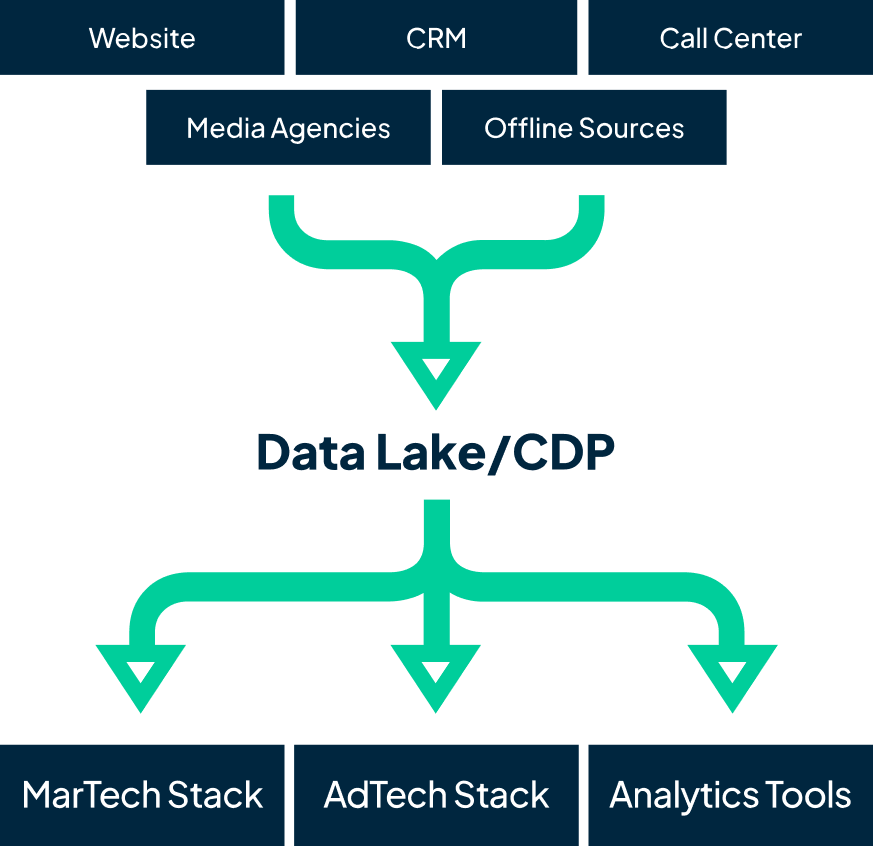10 tips for a winning
first-party data strategy
How CMOs are Gaining a Digital Edge
By Anton Lipkanou
Our Delve Deeper CMO Survey Report reveals that leading brands are rapidly transforming their digital marketing through first-party data.
No matter where your organization stands, here are ten essential best practices for building a winning first-party data strategy.
“Every first-party data project, no matter how small moves you closer to becoming a data-driven leader.”
- Align Goals with Broader Business Strategy
Connect your marketing transformation to overall business objectives. First-party data can help you zoom in on your best customers, eliminate digital marketing waste, understand conversion gaps, and achieve personalization that drives business growth. - Identify All First-Party Data Sources
Before activation, find all your data sources: website, CRM, call center, offline, and more. Siloed data prevents a true 360° customer view—make sure all sources are captured for an accurate starting point. - Establish Data Hygiene Practices
Raw data often isn’t usable. Clean, deduplicate, and format consistently to build trust in the data quality across your organization. Transparency and rigorous data hygiene are key to gaining internal buy-in. - Centralize Data in One Place
Connect all cleaned data in a centralized data lake or customer data platform (CDP). Start with a data lake as a foundation for your journey. Create a private user ID to tie customer actions together, and always own your data. - Integrate with MarTech and AdTech
Connect your data lake/CDP to your MarTech and AdTech stacks to drive automated outcomes. Clearly define use cases to guide what tools you need—e.g., segmentation, product upsells, or reducing waste. - Focus on Quick Wins First
Start small to build momentum. A “crawl > walk > run” approach increases early success rates, building trust internally and identifying future initiatives. Quick wins pave the way for larger-scale transformation. - Communicate Successes in Business Terms
Position your successes as they relate to revenue, profitability, or efficiency. Frame metrics in universal business language, ensuring that non-marketers understand the value of first-party data initiatives. - Expand First-Party Data Use Beyond Marketing
First-party data can serve the entire organization. Use it to anticipate customer service issues or reduce product returns—demonstrate how data insights extend beyond marketing to support broader business needs. - Measure ROI and Ruthlessly Optimize
Measure every aspect of your strategy relentlessly, but be ruthless in optimizing. Identify waste—e.g., low-value customer segments—and redirect efforts. Real value is about both maximizing ROI and building trust in your data. - Scale Digital Transformation
Follow the crawl > walk > run approach to move from small initiatives to broader transformation. Use early wins to get buy-in for larger projects, such as revamping customer experiences through AI or expanding data use into areas like R&D and sales.

Every step, even small, advances your journey to becoming a data-driven leader. Embrace the paradigm shift, and you’ll create a lasting digital edge.
“Every first-party data project, no matter how small moves you closer to becoming a data-driven leader.”

Don't miss an episode.
Subscribe to Giving Growth.
The Giving Growth newsletter delivers the most powerful idea from each podcast episode straight to your inbox. Sign up to get the smartest thinking from leading charity executives.